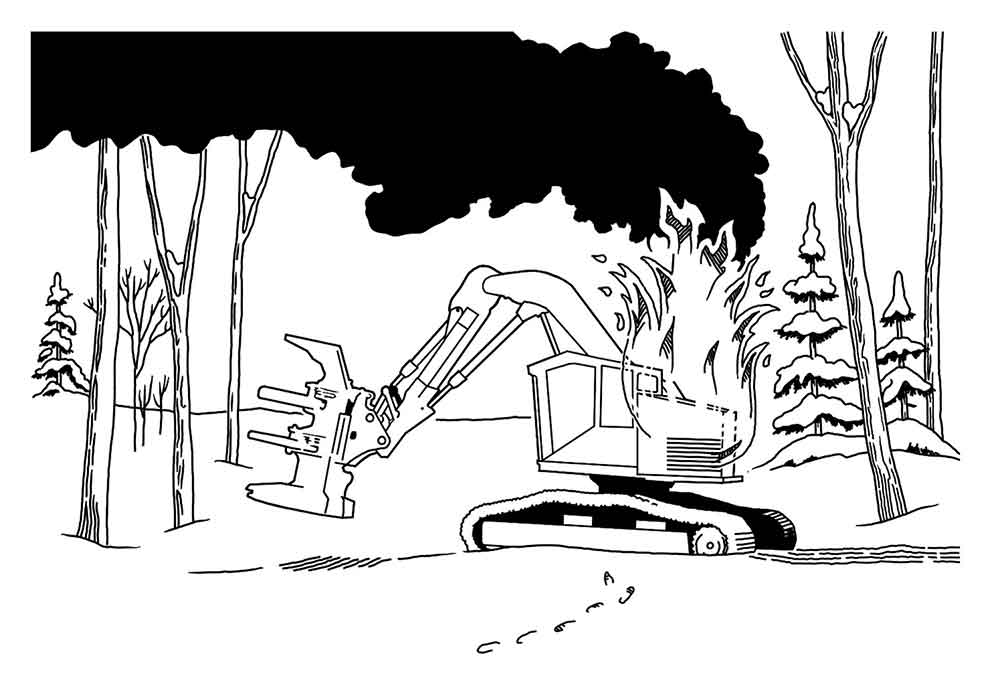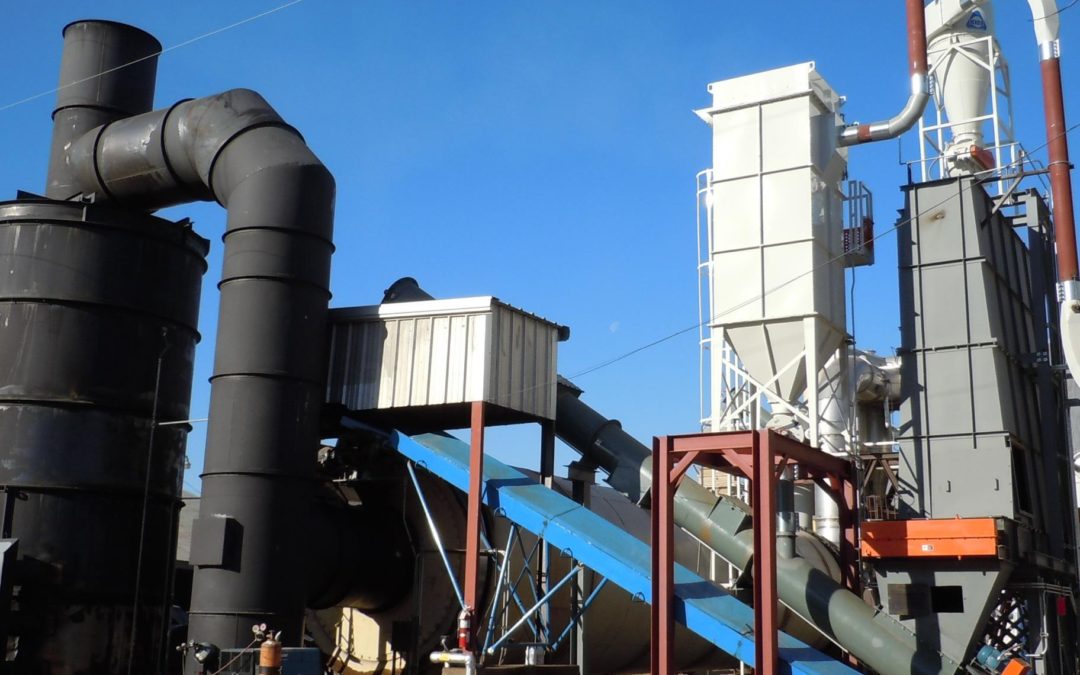Logging Equipment Loss Due To Fire
 BACKGROUND: On a logging job in the Lake States Region during February, an operator of harvesting equipment had blown a hydraulic hose. He called for assistance from a skidder operator for a tow to the landing where the equipment could be repaired.
BACKGROUND: On a logging job in the Lake States Region during February, an operator of harvesting equipment had blown a hydraulic hose. He called for assistance from a skidder operator for a tow to the landing where the equipment could be repaired.
PERSONAL CHARACTERISTICS: The experienced business owner has been logging for nearly 50 years. This was the first time in his career that he experienced an equipment fire.
UNSAFE ACTS AND CONDITIONS: A blown hydraulic hose leaked a flammable fluid that came into contact with a hot surface.
ACCIDENT: While operating the equipment, the machine operator noticed a hydraulic hose had blown. The hose leaked a hydraulic fluid that was ignited when it contacted a hot surface. The operator and several other workers attempted to put out the fire with multiple fire extinguishers but were unsuccessful.
INJURY: No injuries resulted from the equipment fire. The machinery was a total loss that significantly impacted the production and profitability of the logging business.
FIRE PREVENTION FOR LOGGING EQUIPMENT:
- Identify ignition sources on logging equipment. Hot engines, electrical faults, and exhaust surfaces are considered “hot spots.”
- Schedule preventative maintenance to inspect machines for worn parts. Aging equipment may need to be inspected more often.
- Debris from logging, such as leaves, branches, and sawdust, can accumulate on hot surfaces. Inspect these areas several times throughout the day. Shut down the machine and clean debris from hot surfaces if found. Common spots for debris accumulation are belly pans, side shields, and access guards.
- Check for a buildup of grease, oil, and fuel from leaks or spills.
- Implement a proactive review of electrical systems and wiring components. Log inspections and monitor the frequency of inspections.
- Keep fully charged fire extinguishers on board the equipment.
- Shut down equipment before fueling.
- At the end of the day, remain on site for 15-30 minutes to monitor machinery for fire ignition.
- Consider installing an onboard fire suppression system.
Supplied by Forest Resources Association
Latest News

Tracy Gunter Left Legacy Of Leadership
Tracy C. Gunter, Jr., long respected for his leadership in the logging industry, and owner of Tracy’s Logging, Leesville, SC, died March 23. He was 84. In October 1997, in the 25th anniversary issue of Southern Loggin’ Times, Gunter was named as...

Enviva Closing Amory Mill in Mississippi
Emerging from bankruptcy in late 2024, Enviva announced in early February that it was closing its Amory pellet plant in northeast Mississippi. The Amory facility was the company’s first plant operated in the U.S. and was acquired in 2010. According...
Have A Question?
Send Us A Message
